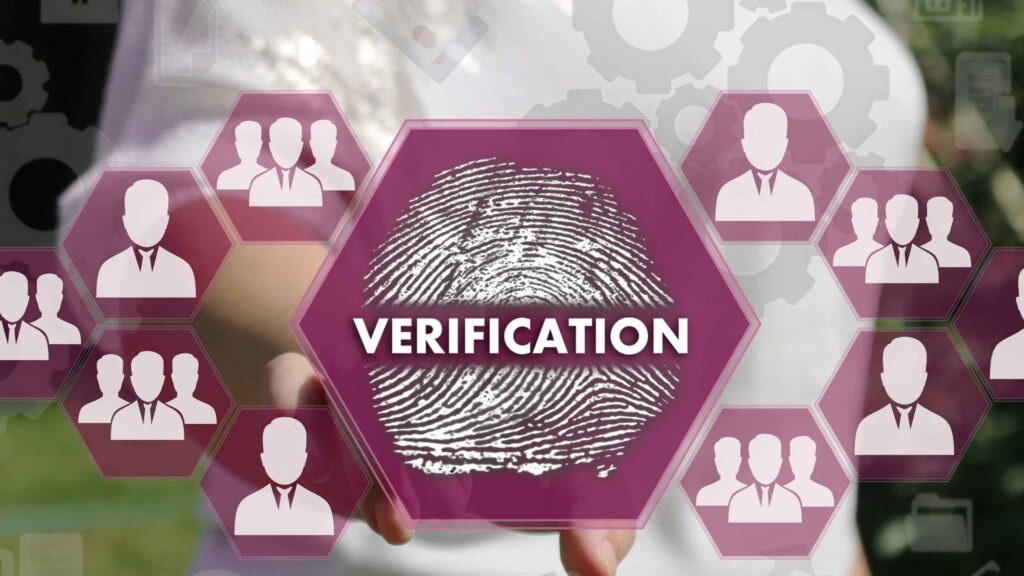In today’s fast-paced world, convenience is key. That is especially true for services that use your data, e.g., fingerprinting. Even though, in the past, fingerprinting used to require a visit to an office or a police agency, the emergence of mobile fingerprinting has changed the game. But how does it work? This guide will explain how mobile fingerprinting works, its benefits, and why it’s a smart choice for individuals and businesses.
What is Mobile Fingerprinting?
However, it is necessary to first define mobile fingerprinting and how it differs from other fingerprinting techniques. Mobile fingerprinting is a technique in which a trained member of staff visits your desired location (e.g., house, office, or any other place) and takes fingerprints in a unique device.
This methodology uses high-tech techniques, such as online scanner fingerprinting, to characterize high-quality prints. Unlike ink-based fingerprinting technology, mobile fingerprinting does not require an ammaré dope pad. Instead, it’s faster, cleaner, and more secure.
Convenience is the key advantage that makes mobile fingerprinting a preferable scheme compared with the others. Whether you need fingerprints for employment, a background check, or a professional license, mobile fingerprinting eliminates the need for travel, waiting in lines, and the hassle of finding a nearby office or law enforcement station. Because of mobile fingerprinting, it is possible to collect fingerprints at any location and at any time.
The Mobile Fingerprinting Process
So, how does mobile fingerprinting work in practice? The process is simple. Here you’ll find a breakdown of the general steps involved in the mobile fingerprinting process.
Step 1: Scheduling an Appointment
Scheduling an appointment is the first step of mobile fingerprinting. Most mobile fingerprinting service providers offer easy online booking, phone scheduling, or even a mobile app for booking your session.
To begin, you’ll need to provide basic information such as your name, location, preferred time, and the type of fingerprinting service required. You may also be asked to provide information about the background check you are undergoing, as this will allow the technician to set the appropriate fingerprinting procedure and ensure it is sent to the proper agency (FDLE, FBI, etc.).
Once the details are confirmed, you’ll receive a scheduled appointment, and the technician will arrive at your location at the appointed time.
Step 2: Fingerprint Capture
Once the technician arrives, the next step of mobile fingerprinting is the fingerprint, so-called fingerprinting capture. The technician will bring the necessary equipment, which typically includes a live scan device. Live scan fingerprinting is fabricated by a scanner, which creates a digital fingerprint of your fingerprints with no ink.
Here’s how it works: The technician will have you put your fingertips on the scanner one by one. The scanner will obtain a high-resolution image of each fingerprint. The technician can also verify the print fineness and legibility in background screening if required.
This process is quick, and there’s no mess involved. Instead of fingerprinting using ink, you won’t have to keep an eye out for smudges on the fingerprint and the ink will also not need to dry. The live scan technique not only saves time but is much more accurate.
Step 3: Verification and Submission
After the fingerprints are captured, the technician will see whether the fingerprints are legibly captured. Mobile fingerprinting consists of a checking process, which aims at checking whether the prints are legible and comply with agency guidelines, such as FDLE or FBI guidelines. If the prints are legible, they will be sent directly to the agency for background check.

This may necessitate an expanded set of documents to be requested from the technician as the prints are being submitted for the intended use. For instance, they might ask for your ID as proof of identity. Once everything is in order, the fingerprints are sent electronically, and you’ll typically receive a confirmation that your prints have been successfully submitted.
Common Uses for Mobile Fingerprinting
The mechanism of how a mobile fingerprinting device works has made mobile fingerprinting applicable to a broad spectrum of use cases in many different fields. Here are some common uses for this service:
Employment Screening
One of the most frequent uses for mobile fingerprinting is employment background checks. A significant number of employers, particularly in healthcare, education, and law enforcement, make fingerprinting part of the hiring process. With mobile fingerprinting, candidates can easily have their prints taken at a convenient time and location, saving them a trip to a fingerprinting office.
Licensing and Certification
Mobile fingerprinting, also, is commonly applied for licensing and certification applications. Fingerprint requests can be made by licensing officers for the purpose of obtaining or renewing licenses for occupations such as real estate, finance, and health care. Instead of appointments to a neighbourhood police station or a fingerprinting facility, mobile fingerprinting allows somebody to skip this step but also stays at home/work.
Background Checks for Immigration or Security Clearances
Mobile fingerprinting is one of the main reasons for background checks of immigrants or security clearances for that purpose. Whether you are applying for a visa or a government position, fingerprinting is often required. Mobile fingerprinting offers a convenient and easy way of accomplishing this task.
How to Prepare for Mobile Fingerprinting
Despite the apparent simplicity of the mobile fingerprinting process, there are specific things that can be done to ensure the process runs smoothly from start to finish. Here are some tips on how to prepare:
Documents Required
When performing mobile fingerprinting, be prepared to have the necessary materials available. Normally you must provide proof of identity, such as a driver’s license, passport, or state-issued ID. In rare cases, you may also need additional documentation, such as a fingerprinting request form or a background check consent form.
What to Expect During the Appointment
On the day of your mobile fingerprinting appointment, expect the technician to arrive with the necessary equipment at your scheduled time. The process will take just a few minutes, and you’ll need to follow the technician’s instructions for placing your fingers on the scanner.
Nevertheless, it is important to stress that mobile fingerprinting is in its current state of evolution. To be as smooth and painless as possible, there is no inconvenience. Make sure you’ve got all your paperwork in order and be ready to have your fingerprints taken quickly.
Tips for a Successful Fingerprint Submission
For optimum results from your mobile fingerprinting session, please follow these recommendations:
Be on time: Arrive at the appointment location a few minutes early to ensure everything runs smoothly.
Bring the right documents: It will accelerate the flow of streamlining the preparation of your identification documents, such as a driver’s license or passport.
Cooperate with the technician: Carefully follow all instructions to ensure a proper print.
The Costs of Mobile Fingerprinting
To know how mobile fingerprinting works is important, but knowing how much the service costs is more important. The charges can vary depending on, for example, the background check required, the duration since the technician needed to travel, and the timeliness of the service.
Typically, a single payment is made for the fingerprinting service, with an additional payment for mobile travel or expedited service. Many companies provide transparency on pricing, so the price is obvious before you commit to the service.
Factors Affecting Cost
Location: Travel fees could be charged if the technician has to travel a long way.
Type of Service: Background checks (e.g., FBI background checks) can be expensive because of the corresponding time and effort.
Urgency: In case of an emergency, additional payment will apply if fingerprints need to be processed.
Why Choose Mobile Fingerprinting Over Traditional Methods?
These are the reasons why mobile fingerprinting is a desirable alternative to traditional methods. Here are a few key benefits:
Convenience
Convenience is the most striking characteristic of mobile fingerprinting. Instead of your busy schedule the time for visiting a fingerprinting office is, a mobile technician can be brought to you. This saves you time and work, and very much so, if you have a busy work life.
Faster Turnaround Time
Mobile fingerprinting, for the most part, produces a quicker completion time in comparison to conventional, stationary fingerprinting. As your fingerprints are electronically submitted, they can be processed faster, and therefore, there is less waiting time for the results of your background check.

Security and Privacy
Mobile fingerprinting providers take privacy and data security seriously. Your fingerprints are safely transmitted to the correct authorities, and your personal data is protected.
Final Thoughts
Mobile fingerprinting is a quick, easy, and secure approach to execute fingerprinting services. Mobile fingerprinting provides a flexible alternative for employment background checks, licensing, and immigration.
By knowing the straightforward step-by-step approach, the services available, and the preparation required, you’ll be well on your way to reaping the benefits of mobile fingerprinting. Are you ready to arrange your appointment? Contact us right now to begin a hassle-free mobile fingerprinting session.


